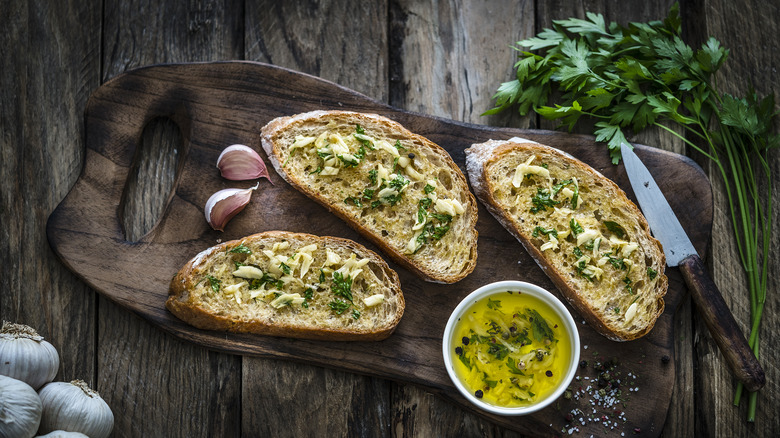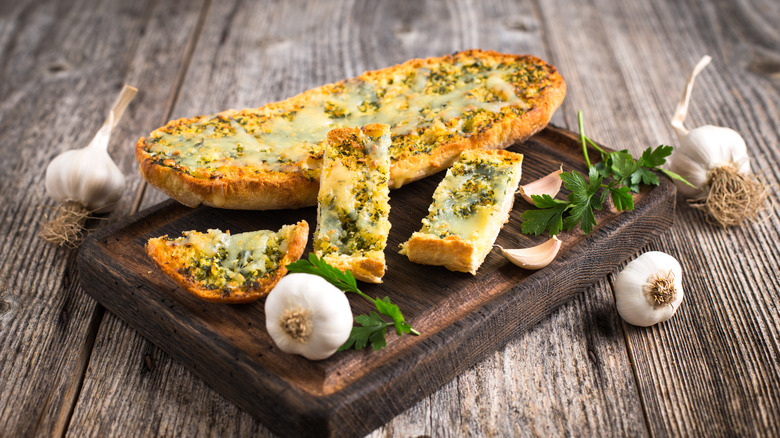It's Actually A Mistake To Use Melted Butter For Garlic Bread
In an ideal world, every meal would have at least one serving of garlic bread. This may be a controversial statement, but then again, who couldn't go for three square slices of buttery, delicious garlic bread a day? The side dish is often served with pasta or Italian foods such as chicken parmesan. And it's no wonder as to why. A good slice of garlic bread can save an otherwise dull day with its tender, buttery, and, yes, garlicky taste. But the same doesn't follow for a bad piece of garlic bread. If your bread is, say, overcooked, or has gone tough, then everyone's favorite side can turn into a crunchy, mouth-scraping chore. And there is one cooking mistake you might be making to cause your garlic bread to turn tough.
Using melted butter may seem like a no-brainer for making garlic bread, but it could actually be the cause of your garlic bread woes. This is because melted butter is more likely to evaporate in the oven, causing your butter to dry up more quickly. And, after all, butter is the central ingredient to good garlic bread, helping to suffuse the flavor of garlic and other herbs while also moistening the base of bread. This is what helps make it a perfect side dish, rich enough to enjoy on its own and tasty enough to complement almost any food. So instead of using melted butter, you should instead use room temperature, softened butter, which will help keep your bread from becoming hard.
A case for unmelted butter
But how much of a difference can the state of your butter make when you're cooking your garlic bread? As it turns out, it is an essential factor in assembling a perfect batch of garlic bread. And using unmelted butter on your bread is an easy swap. Now, you will want to make sure that you don't use cold butter, as cold butter is more difficult to spread, and may result in torn pieces of bread or uneven melting. Softened room-temperature butter, on the other hand, will melt more evenly.
Softened butter also has the additional benefit of being a great medium for mixing in your other ingredients, such as garlic or parsley. Mixing in your minced garlic with your butter will ensure a more even seasoning distribution on your garlic bread. The room-temperature butter will melt more evenly than either cold or melted butter. It will evaporate just enough to ensure that your bread is moist without having unmelted chunks or dried patches, as you can spread the butter evenly across the whole piece of bread. And if you really want to bring your garlic bread to the next level, you can try using (or making) a compound butter on your bread. This will really take your next dinner to a whole new level.

